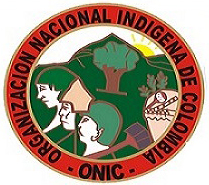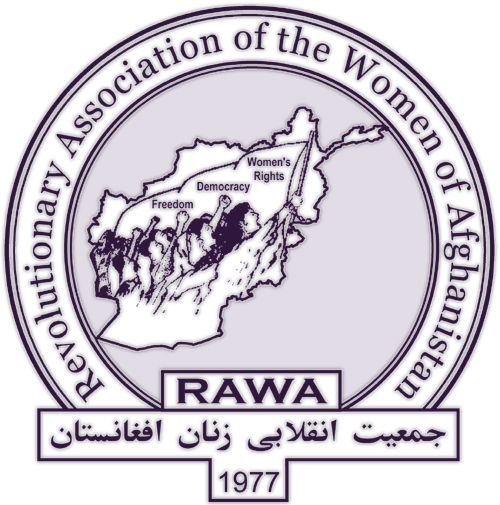Peru
Peru: plan to 'contact' isolated tribe draws protest
In late July, Peru's Ministry of Culture announced a "Care Plan" for a band of Mashco Piro indigenous people believed to be living in voluntary isolation in a remote area of Madre de Dios region in the southern Amazon basin. Ministerial Resolution No. 258-2015-MC stated that the Vice-ministry of Inter-Culturality, through its General Directorate of Rights of Indigenous Peoples, would implement the plan, which emphasized establishing peaceful coexistence between the Mashco Piro and other indigenous communities in the area. The plan was sparked by increasingly frequent sightings of the band and two fatalities in confrontations between band members and communities on the edge of its territory. Encroachments on the band's territory by illegal loggers is believed to be pressuring the group to seek new lands. But government plans to initiative "contact" with the group immediately drew harsh criticism from indigenous rights advocates. "We are extremely worried about this situation and its possible disastrous consequences," said Francisco Estremadoyro, director of Lima-based ProPurús, a nonprofit that seeks to protect the peoples and environment in the area.
Colombia overtakes Peru in coca production
Colombia surpassed Peru last year in land under coca cultivation, resuming its number one position for the first time since 2012. The latest annual report from the UN Office on Drugs and Crime (UNODC) finds that territory under coca cultivation dropped 14% in Peru, from 49,800 hectares in 2013 to 42,900 in 2014—the smallest area under cultivation since 1998. Colombia meanwhile experienced a 44% jump from 48,000 hectares to 69,000. Peru made gains against coca in the Upper Huallaga Valley, while coca fields expanded in Colombia's Putumayo, Caquetá, Meta and Guaviare regions—all on the frontier lands of plains and rainforest east of the Andes. The findings do not necessarily mean that Colombia is now the world's top cocaine producer, as much of Peru's crop is more mature and higher yielding, having never been subjected to eradication. While Peru eradicates in the Upper Huallaga, it resists US pressure to do so in a second coca cultivation zone, the Apurímac-Ene Valley, for fear of inflaming peasant unrest. (AP, UNODC, July 15; UNODC, July 2)
Peru: Amazonians suspend dialogue over oil bloc
Citing a lack of clear response from Peru's government, a group of some 50 apus (traditional leaders) of indigenous peoples in the Pastaza and Corrientes watersheds on July 18 suspended dialogue in the "consultation" process over expansion of oil operations at Bloc 192, in the northern Amazon region of Loreto. For the past 15 years, the bloc has been under development by PlusPetrol, but next month the government is take bids on its expansion over the next 30 years. Pacific Rubiales and Perenco as well as PlusPetrol are expected to place bids. Indigenous organizations FEDIQUEP and FECONACO have been in talks over the expansion with agencies including PeruPetro, the Culture Ministry, the Mines & Energy Ministry, and the General Directorate of Environmental and Energy Issues (DGAAE). FECONACO president Carlos Sandi charged, "The State seeks to repeat that same history of 45 years of oil exploitation," which for rainforest communities has meant "45 years of oil pollution." Added Magdalena Chino of FEDIQUEP: "Mother Earth is suffering, her breast has gone dry and she is crying for us; the animals are missing... It is easy to make standards that destroy us, but when it comes to making standards to protect us, they say it is too difficult." A representative of the Culture Ministry categorically denied negotiating in bad faith. (Diario Uno, July 20; El Comercio, July 19; Observatorio Petrolero, July 18; RPP, June 25)
Trans-Amazon rail project strikes fear in tribes
A controversial mega-project to build a transcontinental railway through the Amazon basin has caused outrage among indigenous people and advocacy groups. UK-based Survival International charges that the rail project, backed by the Chinese government, would cross through many indigenous territories and areas of high biodiversity across the rainforest in Peru and Brazil, opening them to industrial exploitation, illegal mining and logging, and peasant colonization. Survival warns that "uncontacted tribes" would face devastation from invasions into their lands, calling these peoples "the most vulnerable societies on the planet." Whole populations could be wiped out by violence from outsiders and by diseases like flu and measles to which they have no resistance.
Peru: Sendero links to Colombian cartel claimed
Peru's authorities can't seem to put out the last flicker of the Sendero Luminoso insurgency. A generation ago, the Maoist guerillas seemed capable of toppling the government but are now largely confined to a remote pocket of jungle known as the Apurímac-Ene-Mantaro River Valley (VRAEM). But that happens to be a top coca cultivation zone, affording the insurgency access to funds. Now, authorities claim to have uncovered evidence that the neo-Senderistas are in league with one of the re-organized Colombian cocaine cartels, ironically known as the "Cafeteros" (coffee-producers). "For the first time in an objective and concrete manner, the state can corroborate the link between drug trafficking and terrorism in the VRAEM," Ayacucho regional anti-drug prosecutor Mery Zuzunaga told Cuarto Poder TV.
Peru: one dead in Nazca iron mine strike
One was killed at some 200 reported injured when police fired on striking miners blocking a highway near the Shougang Hierro Perú iron mine at Marcona, Nazca province, in Peru's coastal region of Ica on May 25. At least one other worker suffered a bullet wound. Videos aired on media in Peru show workers chanting "no disparen, no disparen" (don't shoot, don't shoot) at the National Police troops. The strike was called by the FNTMMSP union federation to oppose the layoff of more than 80 workers by subcontractor Coopsol. Strikers were also pressing community demands for reduced electricity rates and a potable water project. All 963 workers at the mine took part in the strike, and the company has not brought contract workers to replace them while talks with the FNTMMSP are ongoing. The FNTMMSP on May 18 called a national strike to protest recent government decrees that allow greater use of subcontractors in the mining sector. The FNTMMSP called off the national strike on May 27. (FNTMMSP, May 27; Correo, Revolution News, LAHT, May 25; Reuters, May 18)
Peru declares martial law at disputed mine site
The government of Peru on May 23 declared a two-month period of martial law in the southern region of Arequipa where residents are protesting the construction of a copper mine. Martial law allows police to enter homes without search warrants, as well as to break up protests and meetings. Southern Copper Corporation plans to build a copper mine known as Tia Maria for $1.4 billion, which residents strongly feel will contaminate the water and air in the region, and will be detrimental to the local farming economy. Protests have continued for over two months and often turn violent, even after the government approved the company's environmental study last year that claimed the company could operate a clean mine. The government had already sent in over 4,000 police officers and 1,000 soldiers to the area to control the protests, which have resulted in the deaths one police officer and three protesters. José Ramos Carrera, mayor of Punta de Bombon, stated that the martial law declaration "shows is that the government wants the mine to go ahead at all costs."
China pushes trans-Amazon railway project
China's Premier Li Keqiang, on a tour of South America, is plugging a transcontinental railway project that would cut through the heart of the Amazon rainforest. Last year, President Xi Jinping signed a memorandum on the project with the governments of Brazil and Peru, and Li is now pressing for an actual feasibility study. According to an interactive map on Diálogo Chino website, the "Twin Ocean Railroad" or "Transcontinental Railroad" would start at Porto do Açu in Rio de Janeiro state, and cut through the Brazilian states of Goiás, Mato Grosso and Rondônia. It would terminate at Puerto Ilo in Peru's southern Moquegua region.















Recent Updates
3 hours 50 min ago
8 hours 39 min ago
23 hours 48 min ago
1 day 13 min ago
1 day 7 hours ago
1 day 9 hours ago
2 days 42 min ago
2 days 8 hours ago
4 days 2 hours ago
4 days 2 hours ago